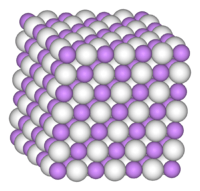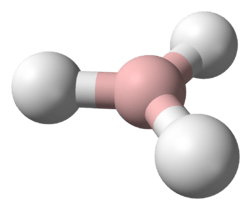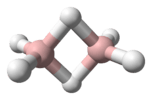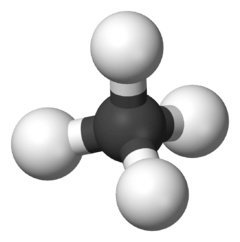Triazane
 | |
| Names | |
|---|---|
| Systematic IUPAC name
Triazane[1] | |
| Identifiers | |
| 14451-01-5 | |
| 3D model (Jmol) | Interactive image |
| ChemSpider | 394177 |
| PubChem | 446953 |
| |
| |
| Properties | |
| N 3H 5 | |
| Molar mass | 47.0598 g·mol−1 |
| Related compounds | |
| Other anions |
Triphosphane |
| Related Binary azanes |
ammonia diazane |
| Related compounds |
Diazene Triazene Tetrazene |
| Except where otherwise noted, data are given for materials in their standard state (at 25 °C [77 °F], 100 kPa). | |
| Infobox references | |
Triazane (also systematically named 1,1,2,3,3-pentahydrido-1,2,3-triazy-[3]catena), or aminohydrazine is an inorganic compound with the chemical formula NH
2NHNH
2 (also written [H
2NN(H)
2NH
2] or [N
3H
5]).[2] Triazane is the third simplest acyclic azane (the simplest are ammonia and hydrazine). It can be synthesised from hydrazine but is unstable and cannot be isolated in the free base form, only as salt forms such as triazanium sulfate. Attempts to convert triazanium salts to the free base release only diazene and ammonia.
[3] Triazane was first synthesised as a ligand of the silver complex ion: tris(μ2-triazane-κ2N1,N3)disilver(2+).
Compounds containing the triazane skeleton
Several compounds, containing the triazane skeleton are currently known, one such notable compound is 1-methyl-1-nitrosohydrazine, produced from the solventless reaction of methylhydrazine and an alkyl nitrite:
- CN
2H
6 + RNO
2 → CN
3H
5O + RHO
1-Methyl-1-nitrosohydrazine is colourless solid, sensitive to impact, but not friction sensitive, and melts at 45°C before decomposing at 121°C. Compared to trinitrotoluene, this compound is more impact sensitive, but less friction sensitive.
References
- ↑ "triazane - PubChem Public Chemical Database". The PubChem Project. USA: National Center for Biotechnology Information.
- ↑ IUPAC Goldbook
- ↑ Wiberg, Holleman & Wiberg. Inorganic Chemistry. p 627. ISBN 9780123526519
External links
- 1-methyl-1-nitrosohydrazine, shows structure of 1-methyl-1-nitrosohydrazine






